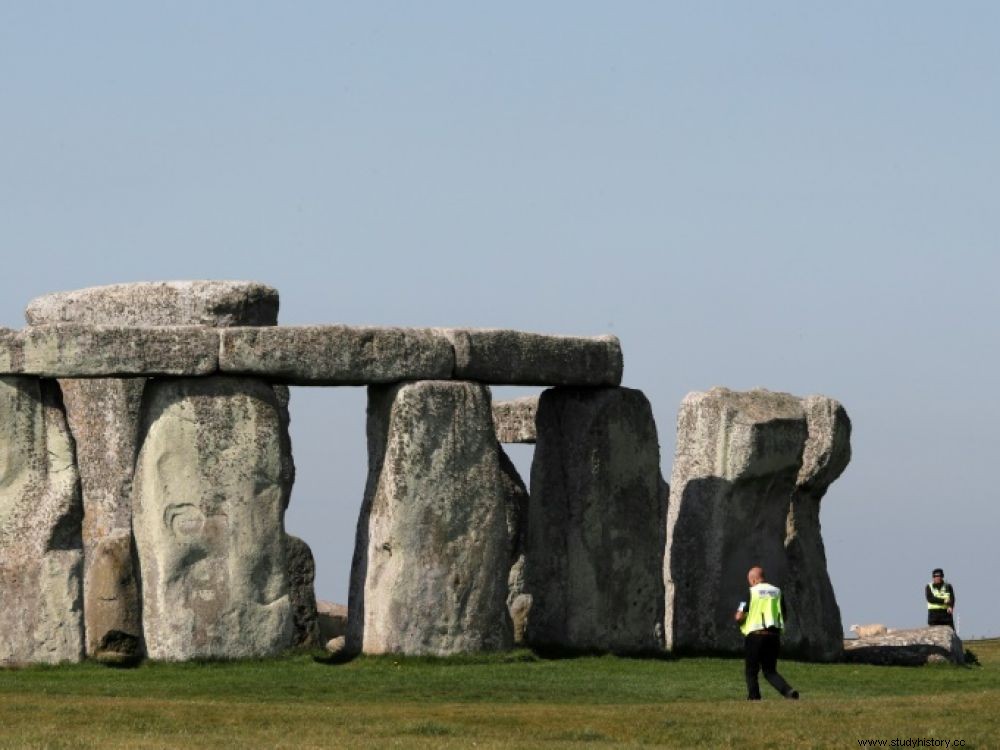Stones at the prehistoric site of Stonehenge in England may have come from another site in Wales more than 200 kilometers away, archaeologists say.

Vigilantes keep watch at the prehistoric site of Stonehenge, in Amesbury, England, on April 26, 2020, as it is closed to the public due to the Covid-19 epidemic
Stones from the prehistoric site of Stonehenge in England may come from another site in Wales more than 200 kilometers away, a discovery that would lift some of the mystery surrounding these famous megaliths, archaeologists believe. /P>
The Waun Mawn stone circle is said to have been erected around 400 years before one of those at Stonehenge
Their study, which is to be published in the British archeology journal Antiquity and is the subject of a documentary aired Friday on the BBC , shows, thanks to the dating of the soil sediments and coal present on the spot, that the stone circle of Waun Mawn (in the south-west of Wales), was erected approximately 400 years before one of those of Stonehenge.
Researchers from University College London (UCL) believe that the blue and gray stones - characteristic of Wales - of Stonehenge may have been moved there by its builders as their community migrated to England.
Scientists have indeed noticed that a circle dating from 3,000 BC on the megalithic site, classified as a UNESCO World Heritage Site, had copied the structure of that of Waun Mawn, having exactly the same diameter (110 meters) and the same alignment facing the sunrise during the summer solstice.

The prehistoric site of Stonehenge, in Amesbury, in the south of England, on April 26, 2020 (AFP/Archives - Adrian DENNIS)
Waun Mawn is one of the oldest stone circles in the UK
This discovery would explain many things about the Stonehenge site, including why its monoliths were not erected in the immediate vicinity of their quarry, like most sites dating from the same period. Waun Mawn, where only four monoliths now remain, is one of the oldest stone circles in the UK, and the third largest in the country. The surrounding area was a large and densely populated area until 3000 BC, when activity appears to have abruptly ceased.
"It's as if (the inhabitants) have disappeared. Perhaps most people have migrated, taking their stones - their ancestral identities - with them" , said Professor Parker Pearson, of UCL. Composed of around 80 stones, the megalithic site of Stonehenge must have borrowed rocks from other monuments than that of Waun Mawn, estimates the professor:"Perhaps there are other (monuments ) to Preseli waiting to be found. Who knows?"
